Poking around at Point Piños
 Apr 28, 2017 • 9:26 PM UTC
Apr 28, 2017 • 9:26 PM UTC United States
United States 140x Magnification
140x Magnification Microorganisms
Microorganisms
AHolder
Learn about the author...
3posts
2comments
3locations
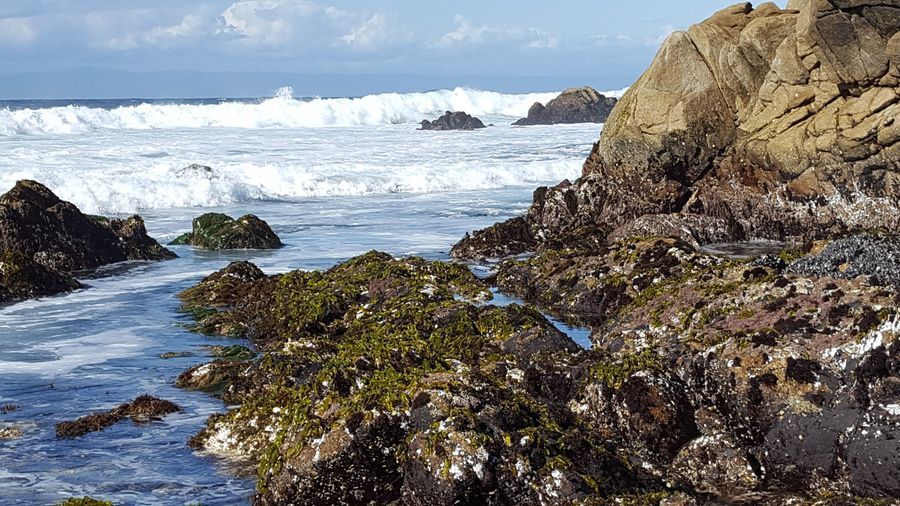
In early February 2017, my marine ecology class went out to Point Piños to check out its rocky intertidal habitat. Point Piños is located in Pacific Grove, California at the very tip of the Monterey Peninsula, and is located within the Pacific Grove Marine Gardens State Marine Conservation Area , and the Monterey Bay National Marine Sanctuary .
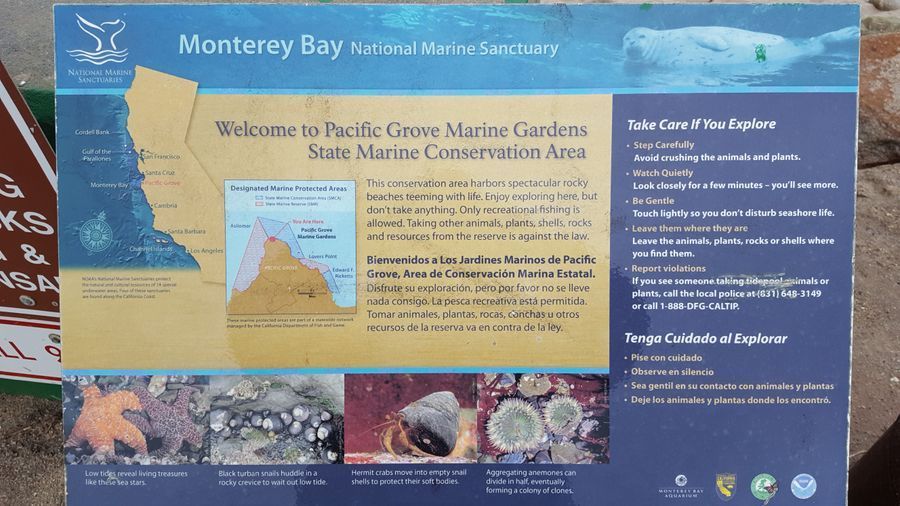
Monterey Bay National Marine Sanctuary sign posted at Point Piños.
During our field trip, we had a great low tide (-0.06 ft) and were able to observe the typical intertidal zonation of species and lots of colorful and interesting algae and animals.
During our field trip, we had a great low tide (-0.06 ft) and were able to observe the typical intertidal zonation of species and lots of colorful and interesting algae and animals.
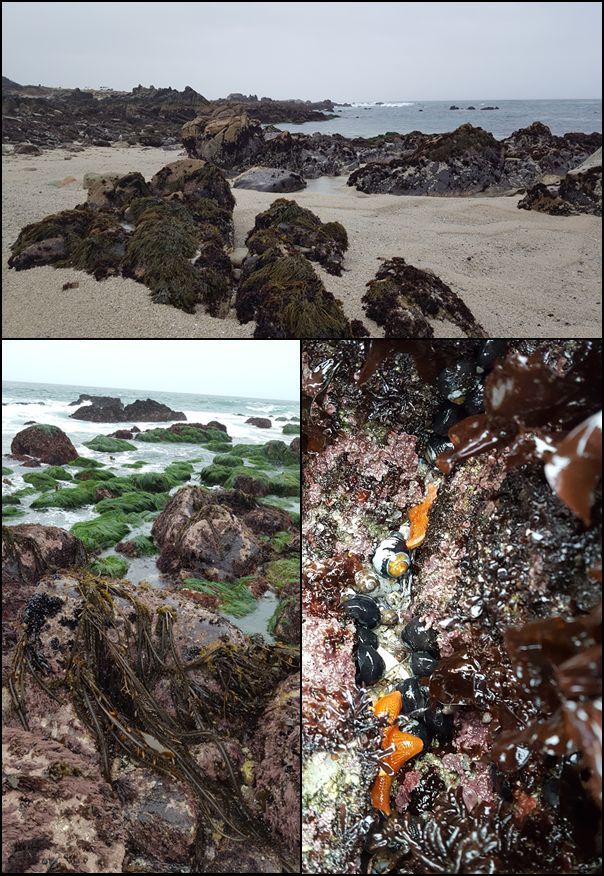
Top: Image of Point Piños intertidal from the beach. Bottom Left: We were able to see lots of vibrant seagrass, feather boa kelp, and coralline algae in the lower intertidal zone. Bottom Right: Turban snails, hermit crabs, sea stars were abundant.
I decided to go back to Point Piños in March to poke around some more and spend some time looking at critters. As soon as I got there, I noticed that the seagrass that was lush and green in February was now mostly brown. I am not sure of exactly why so much of the seagrass was doing poorly. Though, I suspect that an influx of polluted runoff from the large storm we had a few days before had something to do with it.
I decided to go back to Point Piños in March to poke around some more and spend some time looking at critters. As soon as I got there, I noticed that the seagrass that was lush and green in February was now mostly brown. I am not sure of exactly why so much of the seagrass was doing poorly. Though, I suspect that an influx of polluted runoff from the large storm we had a few days before had something to do with it.

Image of the lower intertidal at Point Piños. Note the abundance of brown seagrass.
I found one blade that was detached and seemed to be healthy at one end and dead at the other. I thought it would be interesting to look at the progression of life to death in a single blade. I was able to make a slide and take a look at the seemingly healthy, dying, and dead parts of the blade under the Foldscope. Having a completely flat sample and taping the slides together made it much easier to see and capture images on my phone.
It was interesting to see the differences in color between the completely healthy (green) and dead (brown) parts of the plant, but I found the intermediate images to be the most interesting. You can really see how the death of this blade progressed one cell at a time. In (C) below, the blade appears to be mostly healthy, since the majority of cells are green and only a few have turned brown. In (D), only a few millimeters away, most of the plant seemed to be dead (brown), with only a few healthy green cells remaining.
I found one blade that was detached and seemed to be healthy at one end and dead at the other. I thought it would be interesting to look at the progression of life to death in a single blade. I was able to make a slide and take a look at the seemingly healthy, dying, and dead parts of the blade under the Foldscope. Having a completely flat sample and taping the slides together made it much easier to see and capture images on my phone.
It was interesting to see the differences in color between the completely healthy (green) and dead (brown) parts of the plant, but I found the intermediate images to be the most interesting. You can really see how the death of this blade progressed one cell at a time. In (C) below, the blade appears to be mostly healthy, since the majority of cells are green and only a few have turned brown. In (D), only a few millimeters away, most of the plant seemed to be dead (brown), with only a few healthy green cells remaining.
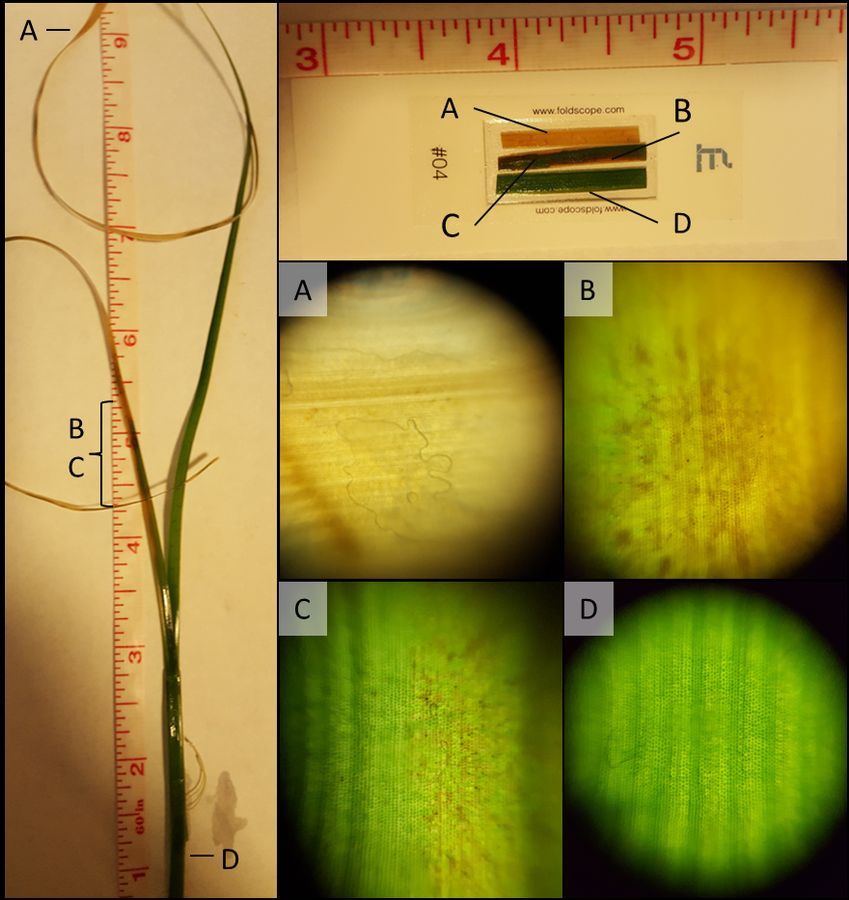
Left: Blade of dying seagrass. Top Right: Slide of the different parts of the blade of seagrass where (A) seemed completely dead, (B) mostly dead, (C) mostly healthy but dying, and (D) completely healthy. Bottom Right: Panels of images captured under the Foldscope.
As I was heading home, I saw barnacle cirri (feeding appendages) floating in a tide pool. I was so excited about looking at it under the scope that I stepped in a different pool and got my entire left pant leg soaked! It was well worth it though; I think I got some pretty cool photos.
As I was heading home, I saw barnacle cirri (feeding appendages) floating in a tide pool. I was so excited about looking at it under the scope that I stepped in a different pool and got my entire left pant leg soaked! It was well worth it though; I think I got some pretty cool photos.
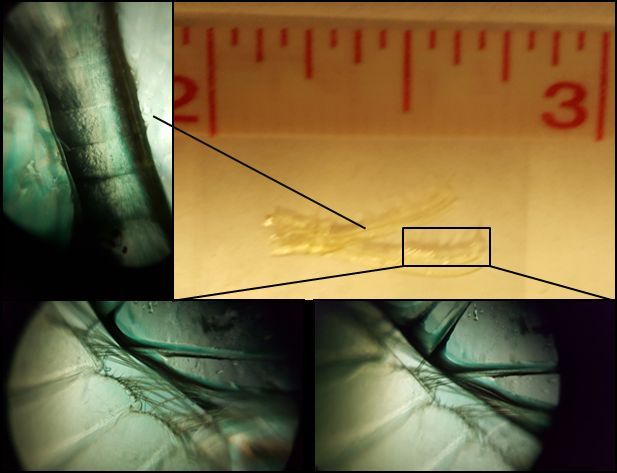
Top Right: Slide of barnacle cirri. Top Left: Image of the legs of the cirri. Bottom: Images of the feather-like hairs, called setae, that filter plankton from the water for the barnacle to eat.
Sign in to commentNobody has commented yet... Share your thoughts with the author and start the discussion!

 0 Applause
0 Applause 0 Comments
0 Comments